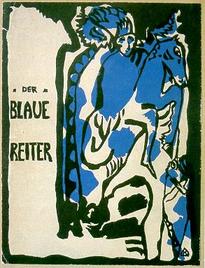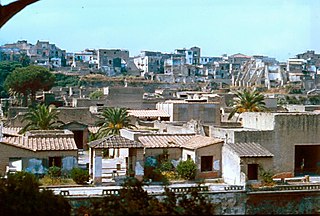Related Research Articles

The Roman Missal is the liturgical book that contains the texts and rubrics for the celebration of the Mass in the Roman Rite of the Catholic Church.

Hunminjeongeum Haerye, or simply Haerye, is a commentary on the Hunminjeongeum, the original promulgation of hangul. The Hunminjeongeum Haeryebon (訓民正音解例本) is the printed edition—bon (本) means "book" or "edition".
An almanac is an annual publication listing a set of events forthcoming in the next year. It includes information like weather forecasts, farmers' planting dates, tide tables, and other tabular data often arranged according to the calendar. Celestial figures and various statistics are found in almanacs, such as the rising and setting times of the Sun and Moon, dates of eclipses, hours of high and low tides, and religious festivals. The set of events noted in an almanac may be tailored for a specific group of readers, such as farmers, sailors, or astronomers.
Charles-Antoine Campion, italianized as Carlo Antonio Campioni was an Italian composer who was born in Lorraine. He was a prolific composer and represented a link between Baroque compositional methods and those of the Classical style.

Eleonora Giulia Amalia Duse, often known simply as Duse, was an Italian actress. She is regarded as one of the greatest actresses of all time, noted for her total assumption of the roles she portrayed. Duse was the subject of the 1947 biographical film Eleonora Duse.

Der Blaue Reiter was a group of artists united in rejection of the Neue Künstlervereinigung München in Munich, Germany. The group was founded by a number of Russian emigrants, including Wassily Kandinsky, Alexej von Jawlensky, Marianne von Werefkin, and native German artists, such as Franz Marc, August Macke and Gabriele Münter. They considered that the principles of the Neue Künstlervereinigung München, a group Kandinsky had founded in 1909, had become too strict and traditional.

Bryggen, also known as Tyskebryggen, is a series of Hanseatic heritage commercial buildings lining up the eastern side of the Vågen harbour in the city of Bergen, Norway. Bryggen has been on the UNESCO list for World Cultural Heritage sites since 1979.

Located principally in the city centre or Cercado de Lima and Rímac areas, the Historic Centre of Lima is among the most important tourist destinations in Peru.

The Kathmandu Valley, historically known as Nepal Valley or Nepa Valley, lies at the crossroads of ancient civilizations of the Indian subcontinent and the broader Asian continent, and has at least 130 important monuments, including several pilgrimage sites for Hindus and Buddhists. There are seven World Heritage Sites within the valley.
Jikji is the abbreviated title of a Korean Buddhist document, whose title can be translated "Anthology of Great Buddhist Priests' Zen Teachings". Printed during the Goryeo Dynasty in 1377, it is the world's oldest extant book printed with movable metal type. UNESCO confirmed Jikji as the world's oldest metalloid type in September 2001 and includes it in the Memory of the World Programme.

Ercolano is a town and comune in the Metropolitan City of Naples, Campania of Southern Italy. It lies at the western foot of Mount Vesuvius, on the Bay of Naples, just southeast of the city of Naples. The medieval town of Resina was built on the volcanic material left by the eruption of Vesuvius that destroyed the ancient city of Herculaneum, from which the present name is derived. Ercolano is a resort and the starting point for excursions to the excavations of Herculaneum and for the ascent of Vesuvius by bus. The town also manufactures leather goods, buttons, glass, and the wine known as Lacryma Christi.

Terengganu Inscription Stone is a granite stele carrying Classical Malay inscription in Jawi script that was found in Terengganu, Malaysia. The inscription, dated possibly to 702 AH, constituted the earliest evidence of Jawi writing in the Malay world of Southeast Asia, and was one of the oldest testimony to the advent of Islam as a state religion in the region. It contains the proclamation issued by a ruler of Terengganu known as Seri Paduka Tuan, urging his subjects to extend and uphold Islam and providing 10 basic Sharia laws for their guidance.

The Innocent was the last film made by Italian director Luchino Visconti. Released in 1976, the film is based on the novel The Intruder by Gabriele d'Annunzio. It was distributed in the U.S. by Analysis Film Releasing Corp.

Villa Saraceno is a Palladian Villa in Agugliaro, Province of Vicenza, northern Italy. It was commissioned by the patrician Saraceno family.

The Giorgio Cini Foundation, or just Cini Foundation, is a cultural foundation founded April 20, 1951 in memory of Count Giorgio Cini.
The Officina Bodoni was a private press operated by Giovanni Mardersteig from 1922. It was named after the great eighteenth-century Italian typographer Giambattista Bodoni. The Officina Bodoni is known for printing books of the very highest quality and the finest craftsmanship.
The Royal Almanac is a French administrative directory founded in 1683 by the bookseller Laurent d'Houry, which appeared under this title from 1700 to 1792, and under other titles until 1919.

Mihri Achba, Mihri Müşfik Hanım, Mihri Rasim was one of the first and most renowned Turkish female painters. She was recognized especially for her portraits, including popular figures Mustafa Kemal Atatürk and Pope Benedict XV.
Editoriale Campi is an Italian publishing house, primarily known as the publisher of the Barbanera almanac and calendar.
References
- ↑ Some sources, like the Treccani dictionary, indicate 1743 as the first year of publication. The oldest edition today, conserved in the historical archive of the Fondazione Barbanera 1762, is a single sheet printed in Foligno by Pompeo Campana and dated 1762, which reports the calendar of that year and an initial prediction signed by Barbanera, already known as "famous", as highlighted by Ivo Picchiarelli in the essay The first steps in an Italian tradition. I primi passi di una tradizione italiana. The oldest Barbanera almanacs folio, in the Fondazione Barbanera 1762 (by), Barbanera 1762, Editoriale Campi, Spello, 2012, p. 72.
- ↑ For a brief history and description of the Barbanera almanac and calendar, see the mentioned Barbanera 1762, published by Editoriale Campi in 2012.
- ↑ See the letter from Gabriele D'Annunzio to Don G. Fava dated 24 February 1934 quoted in Attilio Mazza, D'Annunzio e l'occulto, Edizioni Mediterranee, Rome, 1995, p. 29. The letter is conserved in the archive of Fondazione Vittoriale degli Italiani (Personal Archive, c. 31817).
- ↑ The Memory of the World Register has included the collection of 356 Barbanera almanacs from 1762 to 1962 among its documents, which are conserved at the Fondazione Barbanera 1762 in Spello, Umbria. See also the bibliographical opac www.bibliotecabarbanera.it (last visit on 3/12/2016) and the Barbanera digital library to browse the almanacs protected by UNESCO (last visit on 26/11/2019).
- ↑ See the Unesco, Memory of the World Programme website (last visit on 3/12/2016).